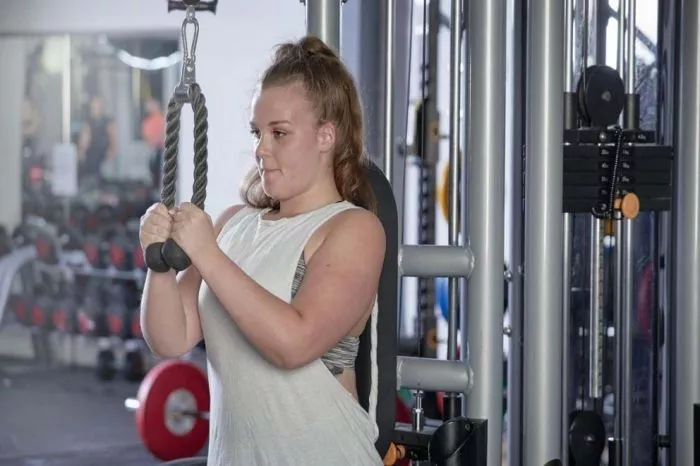Building muscle with small weights is not only possible but can be highly effective when done correctly. While heavy weights are often associated with muscle growth, smaller weights can still stimulate muscle hypertrophy through various training techniques and principles. In this comprehensive exploration, we delve into the science behind muscle growth, the role of resistance training, strategies for maximizing muscle hypertrophy with small weights, and practical considerations for designing effective workout routines.
Understanding Muscle Growth
Muscle growth, also known as muscle hypertrophy, occurs in response to mechanical tension, metabolic stress, and muscle damage induced by resistance training. When muscles are subjected to challenging stimuli, such as lifting weights, they undergo microscopic damage, triggering a series of physiological processes that lead to muscle repair, regeneration, and growth. Over time, consistent resistance training promotes the synthesis of new muscle proteins, resulting in increased muscle size, strength, and endurance.
Role of Resistance Training
Resistance training is a fundamental component of muscle hypertrophy and involves performing exercises that challenge the muscles against external resistance. While traditional resistance training often involves heavy weights and low repetitions to maximize strength gains, research suggests that muscle hypertrophy can be achieved with lighter weights and higher repetitions as well. The key is to progressively overload the muscles by gradually increasing the resistance, volume, or intensity of the workouts over time.
Strategies for Building Muscle with Small Weights
High Repetition Training: Performing exercises with small weights for high repetitions can effectively stimulate muscle hypertrophy by inducing metabolic stress and fatigue. This approach increases time under tension and promotes muscle endurance and muscular endurance.
Time Under Tension (TUT): Focusing on controlling the eccentric (lowering) and concentric (lifting) phases of each repetition can enhance muscle activation and stimulate greater muscle growth with lighter weights. Slowing down the tempo of exercises and emphasizing proper form and technique can maximize time under tension and promote muscle hypertrophy.
Isometric Holds: Incorporating isometric holds or static contractions into resistance training workouts can further challenge the muscles and promote muscle hypertrophy with small weights. Isometric exercises involve holding a position against resistance without changing the muscle length, leading to increased muscle activation and fatigue.
Supersets and Drop Sets: Utilizing supersets, drop sets, or other intensity techniques can increase the intensity of workouts with small weights and enhance muscle stimulation. Supersets involve performing two exercises back-to-back with minimal rest between sets, while drop sets involve progressively reducing the weight after reaching fatigue to extend the set and increase metabolic stress.
Progressive Overload: Implementing progressive overload principles is essential for continuous muscle growth with small weights. This involves gradually increasing the resistance, volume, or intensity of workouts over time to challenge the muscles and stimulate adaptation. This can be achieved by increasing the weight, adding repetitions or sets, or varying the exercise selection.
Practical Considerations for Training with Small Weights
Focus on Form and Technique: Prioritize proper form and technique when training with small weights to minimize the risk of injury and maximize muscle activation. Pay attention to alignment, posture, and range of motion to ensure effective muscle stimulation and prevent compensatory movements.
Listen to Your Body: Pay attention to your body’s signals and adjust the intensity, volume, or duration of workouts as needed. Avoid pushing through pain or discomfort and prioritize rest and recovery to optimize muscle growth and prevent overtraining.
Nutrition and Recovery: Support muscle growth and recovery by consuming a balanced diet rich in protein, carbohydrates, and healthy fats. Adequate hydration, sleep, and recovery strategies such as foam rolling, stretching, and massage can also enhance muscle repair and adaptation.
Consistency and Patience: Building muscle with small weights requires consistency, patience, and dedication. Progress may be gradual, but with consistent effort and smart training strategies, significant improvements in muscle size, strength, and endurance can be achieved over time.
Real-Life Examples of Effective Small Weight Workouts
Bodyweight Exercises: Bodyweight exercises such as push-ups, squats, lunges, and planks can effectively target multiple muscle groups and promote muscle hypertrophy without the need for external weights. Variations of bodyweight exercises, such as incline push-ups or single-leg squats, can increase the challenge and stimulate muscle growth.
Resistance Bands: Resistance bands are versatile and portable tools that can provide varying levels of resistance for strength training workouts. Exercises such as banded squats, banded rows, banded chest presses, and banded lateral raises can effectively target specific muscle groups and promote muscle hypertrophy with small weights.
Dumbbell or Kettlebell Workouts: Dumbbells and kettlebells are excellent options for resistance training with small weights. Exercises such as dumbbell curls, triceps extensions, shoulder presses, goblet squats, and kettlebell swings can target individual muscle groups and promote overall muscle development.
Conclusion
In conclusion, building muscle with small weights is not only possible but can be highly effective when approached strategically. By understanding the principles of muscle hypertrophy, implementing smart training strategies, and prioritizing consistency and patience, individuals can achieve significant improvements in muscle size, strength, and endurance with small weights. Whether using bodyweight exercises, resistance bands, or dumbbells, the key is to focus on proper form, progressive overload, and targeted muscle stimulation to maximize muscle growth and achieve desired fitness goals. With dedication, perseverance, and smart training practices, individuals can unlock their full potential and build impressive muscle mass with small weights.
Related Topics:
Is it okay? – Working out at night


